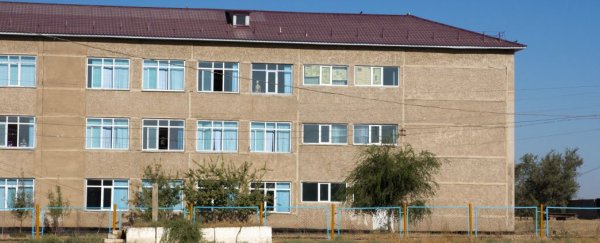Since 2013, a mysterious sleeping sickness has been affecting two isolated villages in northern Kazakhstan. Over the past two years, more than 140 people in Kalachi and Krasnogorsk have fallen asleep suddenly, sometimes while walking or riding their bikes, and occasionally becoming unconscious for up to six days at a time, waking up with memory loss, headaches and grogginess. Others suffered more temporary blackouts, as well as vivid hallucinations.
"The sick person appears to be conscious and can even walk," the newspaper Komsomolskaya Pravda reported in 2014. "But all the same he then falls into a deep sleep and snores, and when they wake him up … the person remembers absolutely nothing."
No one seemed immune to what doctors diagnosed as "encephalopathy of an unknown origin", with everyone, including the elderly and school children, suffering from symptoms. Even a villager's cat was reportedly affected.
It sounds like some kind of Body Snatchers-esque horror plot, and in the beginning, the primary suspect for the illness was counterfeit vodka. But when it became more widely spread, many started to suspect that nearby uranium mines - closed after the fall of the Soviet Union - were to blame. They just couldn't figure out why.
Now scientists think they might have solved the mystery, with the Kazakstani government announcing this week that the sleeping sickness experienced in the villages is effectively a form of carbon monoxide poisoning, caused by large amounts of carbon monoxide and hydrocarbons being released into the air by the defunct uranium mines.
"The uranium mines were closed at some point, and at times a concentration of carbon monoxide occurs there," Deputy Prime Minister Berdibek Saparbaev told the press. "The oxygen in the air is reduced accordingly, which is the real reason for the sleeping sickness in these villages."
The conclusion makes sense, as carbon monoxide binds to human blood 200 times more strongly than oxygen, which means that just a small amount of it is enough to cut off the oxygen to someone's brain.
But not everyone is convinced. "The symptoms fit," Claude Piantadosi, a lung specialist at Duke University Medical Centre in the US, told Sarah Zhang over at Wired. "But the symptoms are not specific … and that's the problem."
Zhang also adds that it seems improbable that closed uranium mines would be releasing dangerous levels of carbon monoxide, which is a byproduct of combustion.
While the mystery may not be solved just yet, the government is currently in the process of evacuating the remaining residents in the villages to prevent further sickness.
